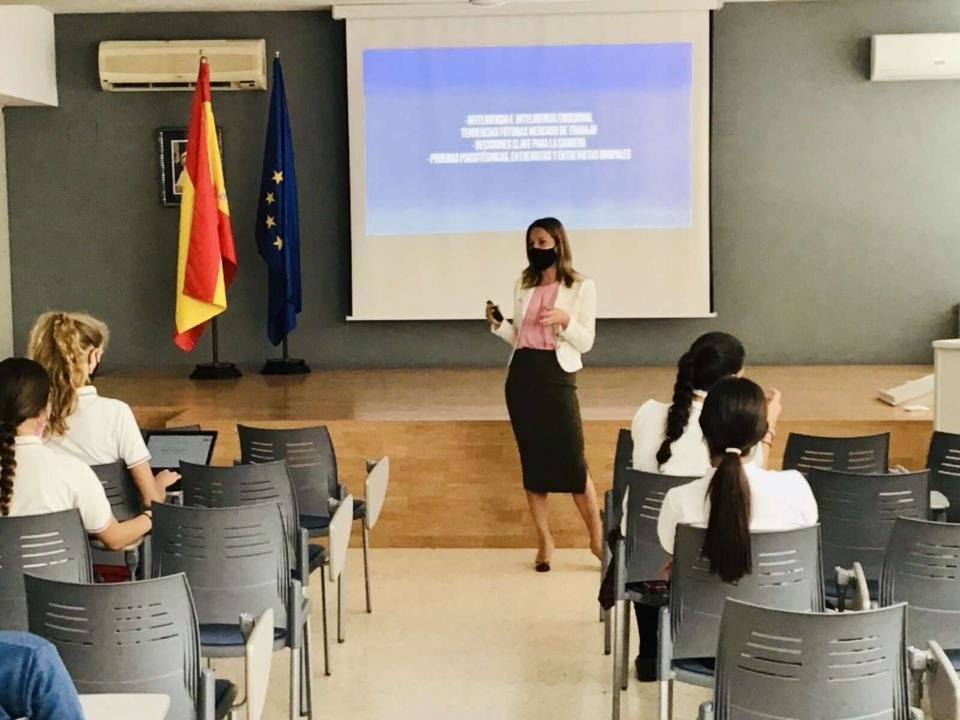Atractores Motivacionales: La herramienta para resolver conflictos

Los Atractores Motivacionales son una herramienta que sirve para entender mejor, de forma rápida y en profundidad, cómo viven la situación de conflicto cada una de las partes implicadas. Lo que ofrece es, por un lado, información y por el otro, ejercicios y pautas para ayudar a encontrar soluciones nuevas al problema. Aunque se trata de una herramienta para gestores de conflictos, cualquier persona con la debida formación o asistencia puede aplicarla para gestionar conflictos en casa, en el trabajo o en la comunidad de vecinos. A quien le interese el tema, que no dude en solicitarme información.
¿En qué consiste? En un conjunto de pautas para enfocar el problema con más amplitud y dar así con soluciones nuevas. Funciona gracias a una clasificación de las motivaciones frente al conflicto en 6 grupos o Atractores Motivacionales (AM), del menos al más complejo: SEGURIDAD, PODER, DEBER, ÉXITO, PERTENENCIA e INTEGRACIÓN. Cada grupo explica la visión del problema e indica cómo trascenderla y pensar con más amplitud. Aplicando Atractores Motivacionales logramos tomar distancia, entender mejor una situación, contemplar el conflicto como algo transitorio y enfocarnos hacia lo que realmente va a motivar a esa persona – o grupo de personas- a salir del bloqueo. La idea que reside en la base de esto es que no hay formas de pensar mejores que otras, sino más complejas e integrativas que otras y cuantas más perspectivas consideremos al analizar una situación, más fácil será crear acuerdos.
Para identificar el Atractor Motivacional predominante de las personas enfrentadas se puede pasar a cada uno de ellos un breve cuestionario -10 minutos- cuyos resultados darán pistas sobre el escenario futuro dónde visualizar el conflicto resuelto. Será un escenario construido en el Atractor Motivacional que sigue al predominante en complejidad, aquel que lo incluye y trasciende. Por ejemplo, si el Atractor Motivacional predominante de alguien es Seguridad, el gestor de conflictos hará preguntas y reformulaciones orientadas hacia AM-Poder, si es Poder, hacia AM-Deber, si es deber, hacia AM-Éxito Personal, si es Éxito, hacia AM-Pertenecía. Se trata de un ejercicio de reflexión muy positivo.
Los bloqueos de comunicación y creatividad se forman, más comúnmente, en los cuatro primeros Atractores: Seguridad, Poder, Deber y Éxito, por estar vinculados a maneras parciales de ver las cosas y emociones como el miedo, la ira, la violencia, los prejuicios, la rabia, el sufrimiento, la competitividad, la envidia y, en general, factores que agrandan un problema. Por otro lado, la Inclusión -pertenecer al grupo- y, especialmente, la Integración -soluciones compartidas-, son Atractores Motivacionales desde los cuales es más fácil llegar a acuerdos, y hacía ellos tratamos, los mediadores y gestores de conflictos, de ampliar las perspectivas de las personas enfrentadas. La solución más simple que, al mismo tiempo, considere una mayor complejidad de factores será siempre la más sostenible en el tiempo, por eso merece la pena aprender a mirar con amplitud. Más información sobre esta herramienta y cursos de formación en www.atractoresmotivacionales.com y en [email protected].
Catalina Bernaldo de Quirós.
Mediadora y Pedagoga
Directora del Gabinete de Mediación “Co-Mediacion”
Más info en: www.co-mediacion.com
 Catalina Bernaldo de Quirós
Catalina Bernaldo de Quirós
Motivational Attractors: The tool to resolve conflicts
Motivational Attractors are a tool that is used to quickly gain a better and deeper understanding of how the conflict situation is experienced by each of the parties involved. What it offers is, on one hand, information and on the other, exercises and guidelines to help to find new solutions for the problem. Although it is a tool for conflict managers, anyone with the right training or assistance can apply it to manage conflicts at home, work or in the community of residents. Those who are interested in the matter should not hesitate to request information from me.
What does it involve? A series of guidelines to gain a broader approach to the problem and thus provide new solutions. It works thanks to a classification of motivations against conflict in 6 groups or Motivational Attractors (AM), from the least to the most complex: ASSURANCE, POWER, DUTY, SUCCESS, BELONGING AND INTEGRATION. Each group explains its vision of the problem and indicates how to overcome it and think more broadly. By applying Motivational Attractors, we manage to take a step back, gain a better understanding of a situation, view the conflict as something transient and focus on what is really going to motivate that person -or group of people- to get out of the deadlock. The idea on which this is based is that no ways of thinking are better than others, but rather more complex and integrative than others and the more perspectives we consider when analysing a situation, the easier it will be to create agreements.
In order to identify the predominant Motivational Attractor of the people in conflict it is possible to give each of them a short questionnaire -10 minutes- whose results will provide clues about the future scenario on which to visualise the resolved conflict. It will be a scenario built on the Motivational Attractor that follows the predominant one in terms of complexity, that which includes it and transcends it. For example, if the predominant Motivational Attractor is Assurance, the conflict manager will ask questions and reformulations guided towards, AM-Power, if it is Power, towards AM-Duty, if it is duty, towards AM-Personal Success, if it is Success, towards AM-Belonging. It is a very positive reflective exercise.
Deadlock in communication and creativity is most commonly formed around the four first Attractors: Assurance, Power, Duty and Success, as they are linked to partial ways of seeing things and emotions such as fear, anger, violence, prejudices, anger, suffering, competitiveness, envy and, in general, factors that increase a problem. On the other hand, Inclusion -belonging to a group- and, especially, Integration -shared solutions-, are Motivational Attractors through which it is easier to reach agreements, and towards which we, the mediators and conflict managers, try to broaden the perspectives of the people in conflict. The easiest solution that, at the same time, entails a greater complexity of factors will always be the most sustainable over time, therefore it is worthwhile learning to take a broad perspective. More information about this tool and training courses at www.atractoresmotivacionales.com and at [email protected].
